Top 10 Most Beautiful Castles In Europe
Castles have always been the most wonderful architectures in Europe, both in the past and present. Europe is peppered with incredible castles, spanning a variety of eras and architectural styles. From Sleeping Beauty's castle come to life in Germany to a spooky Dracula castle in Romania, these structures are filled with mystery and myth, and have captured people's attention for centuries.
European Castles
Castles in Europe date as far back as the 9th century and are a symbol of the Middle Ages.
In the olden days, castles were the residences of kings, queens and lords. As fortresses, castles were built for protection from enemy attacks but they also served to exhibit the owners' wealth and status. Most of the castles in Europe were strategically built on hilltops, and even on isolated islands, to ensure safety from invasion or intrusions.
Early castles were generally made of stone, mortar and timber. Defense and security were the main concerns in the architecture. They were definitely far from comfortable for its inhabitants.
Later, in the Renaissance period castles became more and more comfortable and gradually the castles lost their defensive role. Many of the old castles suffered big changes and new residential type castles or palaces were newly built.
Some of these castles currently stand in ruins, others vanished completely, but a visitor can still visit many of them, as throughout Europe many castles were turned into museums or stand alone as tourist attractions. Some of them were turned into hotels too, so a visitor not only can enjoy visiting castles but also can have the privilege of staying overnight in one.
10 most beautiful castles in Europe
1. Bran Castle, Romania
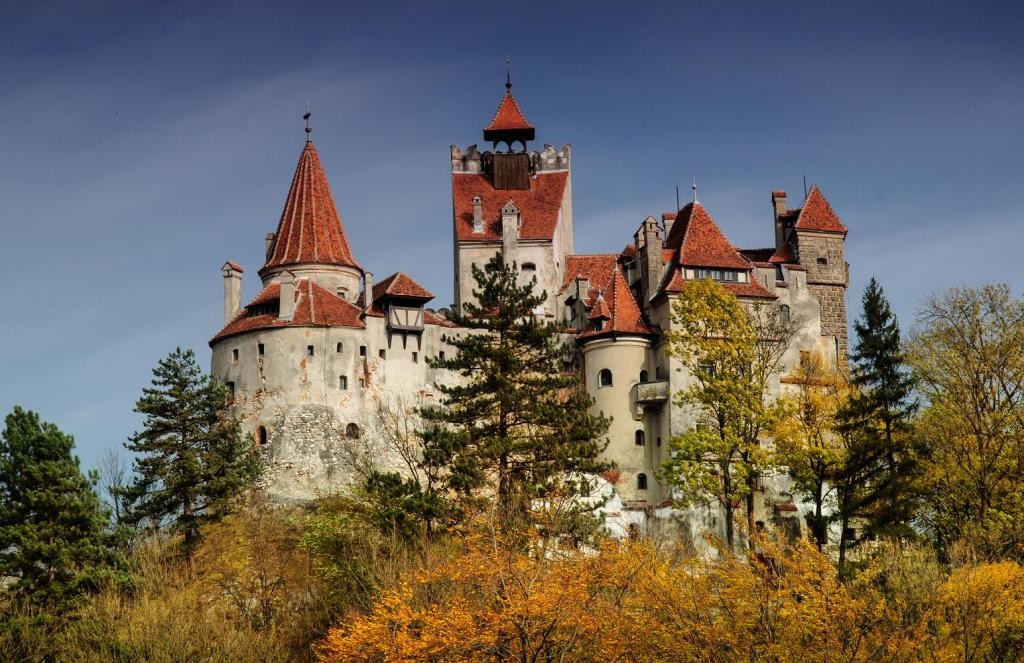 |
| Photo: TheMayor.EU |
Surrounded by an aura of mystery and legend and perched high atop a 200-foot-high rock, Bran Castle owes its fame to its imposing towers and turrets as well as to the myth created around Bram Stocker's Dracula.
Built on the site of a Teutonic Knights stronghold dating from 1212, Bran castle was first documented in an act issued on November 19, 1377, giving the Saxons of Kronstadt (Brasov) the privilege to build the Citadel.
Although Stoker never visited Transylvania, the Irish author relied on research and his vivid imagination to create the dark and intimidating stomping ground of Count Dracula, leading to persistent myths that it was once the home of Vlad Tepes, ruler of Walachia. While the association with Dracula is sketchy at best, the castle continues to hold a strong attraction for all fans of the Count.
From 1920 to 1948 Bran served as royal residence, a gift of the people of Brasov to Queen Marie of Romania.
Bran castle is now a private museum open to tourists, displaying art and furniture collected by Queen Marie.
Narrow winding stairways lead through some 60 timbered rooms, many connected by underground passages, which house collections of furniture, weapons and armor dating from the 14th to the 19th centuries.
2. Neuschwanstein Castle, Germany
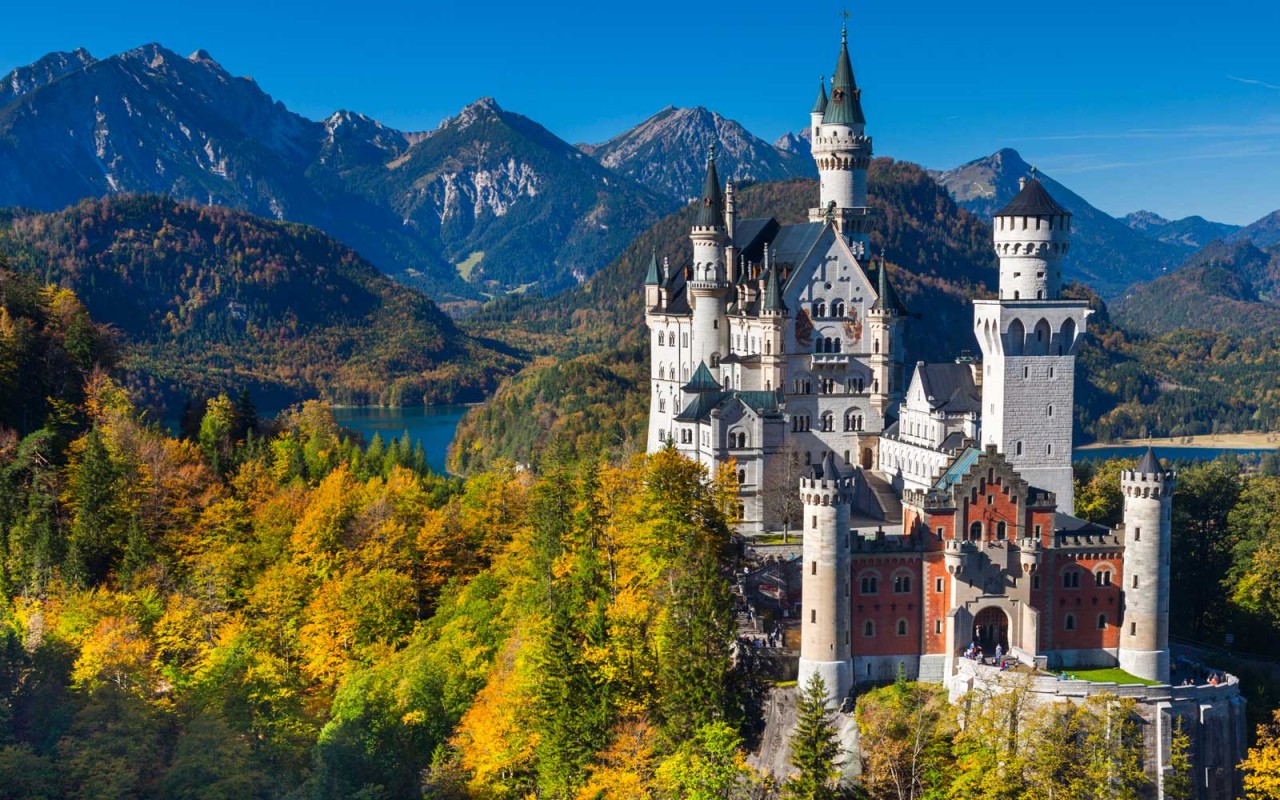 |
| Photo: Travel + Leisure |
Neuschwanstein Castle, which literally translates to New Swan Stone castle, is located in Bavaria, Germany. It was originally called New Hohenschwangau Castle, as it was meant to be a grand recreation of Hohenschwangau Castle, where Ludwig II spent his childhood. The older Schloss Hohenschwangau now sits in Neuschwanstein's magnificent shadow.
Construction of Neuschwanstein broke ground during the summer of 1868, but the first foundation stone wasn't laid until September 5, 1869. By 1873, parts of the castle could be occupied by Ludwig II, though he never lived to see his full vision realized. The Bower and Square Towers were completed in 1892, nearly a quarter of a century after work on the castle began, and many years after Ludwig II passed away and the castle was opened to the public.
According to plans, the castle was meant to have more than 200 rooms. But just over a dozen were finished before funds for the project were cut. Estimates put the total square footage at roughly 65,000 square feet.
Ludwig II's reputation as an eccentric, reclusive king makes it easy to see why Neuschwanstein is so often called "the castle of the fairy-tale king." In a letter to his friend, the German composer Richard Wagner, Ludwig II said his intentions with Neuschwanstein were to "rebuild old castle ruin of Hohenschwangau…in the authentic style of the old German knights' castles."
But it is believed — almost without dispute — that Ludwig II built Neuschwanstein for political and deeply personal reasons. In 1866, Prussia emerged victorious from the Austro-Prussian War, forcing Bavaria to accept an alliance with the empire. King Ludwig II of Bavaria essentially lost his power. It is thought that Neuschwanstein became the centerpiece of Ludwig II's imagined kingdom, where he could act as a true royal.
3. Peleș Castle, Romania
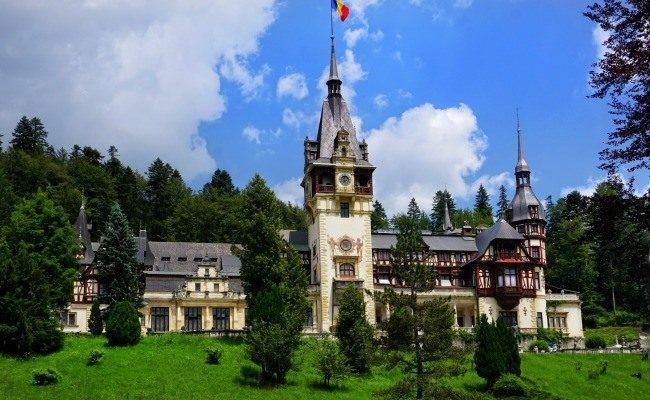 |
| Photo: The Globetrotting Teacher |
When King Carol I of Romania visited the small village of Sinaia in the foothills of the Bucegi mountains in the 1860s, he was captivated by its scenic location and commissioned the construction of a palace there. The resulting castle is easily one of the most stunning in all of Europe.
The construction took 10 years, but by the end of it, the Romanian royals had a summer palace equipped with everything from a movie theater to a concert hall. The ornate 160-room palace was built in a Neo-Renaissance style and each room had its own identity and theme. After its inauguration in 1883, the king and his family began spending their summers in the fairytale castle, which also served as the venue for important meetings during the early months of World War I.
The first couple to live there, King Carol I and his wife Queen Elizabeth of Romania were known to be very different in temperament and interests. The king was an accomplished soldier who greatly expanded and improved the Romanian military, and the queen was more artistic, with a great fondness for music, art, and literature, and even published poetry under the pen name Carmen Sylva. Peleș, too, was a reflection of these two different personalities.
On one hand, there was an extensive 4,000-piece collection of weaponry from Europe and Asia on display in the Weapons Room. On the other, there was a beautifully appointed movie theater, whose walls and ceilings were decorated with frescoes by Austrian artists Gustav Klimt and Franz von Matsch. The first movie projection in Romania is reported to have taken place in this room. Other art forms were far from neglected. The Music Room contained intricate pieces of teak furniture gifted by the Indian Maharajah of Kapurtala and was used as a salon by Queen Elizabeth.
4. Bojnice Castle, Slovakia
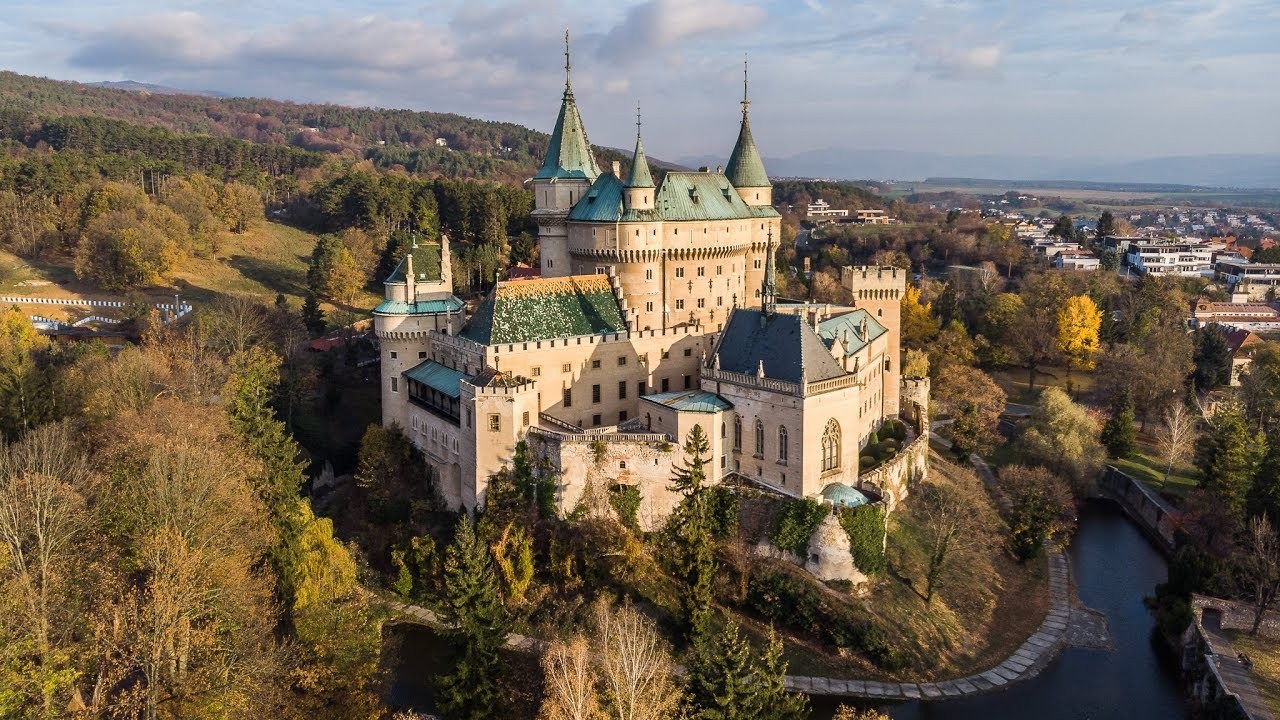 |
| Photo: Bernhard's Travel Blog |
Bojnice Castle is the most famous castle of Slovakia. It is situated in Bojnice, a town 167 km northeast of Bratislava, the capital of Slovakia.
The Bojnice castle was first mentioned in the 12th century and since then it was owned by Matthias Corvinus, the Thurzo family or the Pallfy family amongst others.
There is a room of arms in one tower, complete with all sorts of medieval tools of destruction - swords, halberds, maces, shining suits of armour.
In one room, the ornately carved ceiling glitters with pressed gold. A lustrous oil portrait of Jan Pallfy occupies the centre panel of that ceiling. Another room is covered in hand-painted Turkish tiles, with huge Chinese vases sitting on either side of the porcelain mantlepiece.
The legend of the black lady
The Black Lady and her husband, the lord of the castle, were a happy, successful couple. The lord was a military leader with a record of many battlefield victories. She was known for her virtue. Then, some relatives came to stay. They soon became envious of the Black Lady and her husband. Beautiful, young, rich - they had it all.
So they told the lord that while he was out waging war, his wife was having fun with other knights. He was enraged. He devised a simple test of her virtue. She had to jump from the castle's highest tower into the moat with their newborn child. If she lived, she was innocent. The people of the village gathered to see if the lord of the castle would change his mind.
The Black Lady jumped with her child without hesitation, because she knew she was innocent. Before they hit the water, they suddenly floated upand away, proving her innocence. Then the crowd heard a noise: It was the relatives, going up in a puff of smoke. And from that time on, she has wandered the halls and stairs of the castle, wearing black, or sometimes appearing only as a strange shadow.
5. Glücksburg, Germany
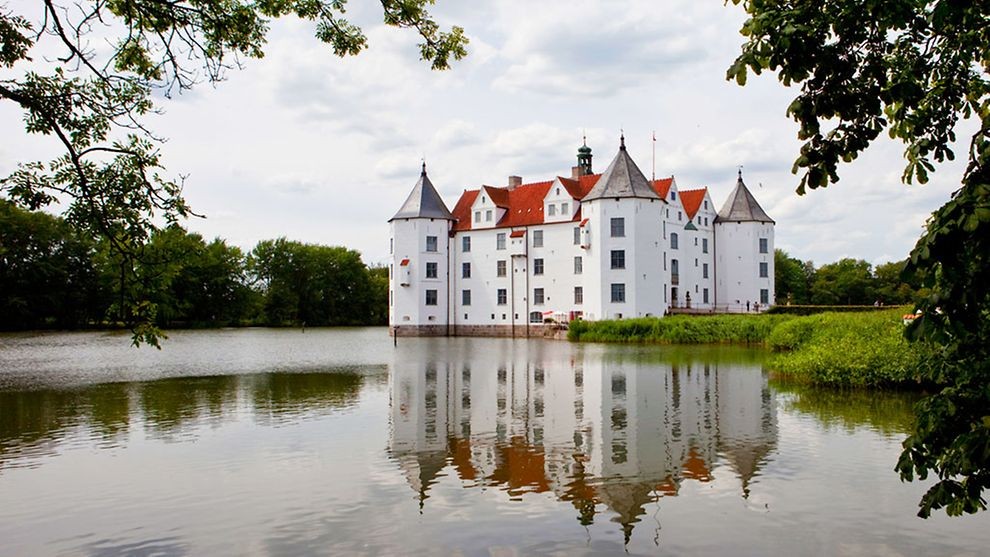 |
| Photo: Hamburg |
Glücksburg Castle is one of the most important Renaissance castles in northern Europe. It is the seat of the House of Schleswig-Holstein-Sonderburg-Glücksburg and was also used by the Danish kings. Situated on the Flensburg Fjord the castle is now a museum owned by a foundation, and is no longer inhabited by the ducal family.
The castle was built from 1582 to 1587 by Nikolaus Karie for John II, Duke of Schleswig-Holstein-Sonderburg, (1545-1622) at the site of an former monastery, the building material was partly reused in the castle. The grounds of the monastery were then flooded to create a large pond almost entirely surrounding the castle.
The castle is built on a 2.5 metres high granite foundation that emerges from the water. The bricks used for the construction were mainly taken from the demolished monastery. The base area is a square with sides of nearly 30 metres, consisting of three separate houses with their own roofs. While the great halls and the vestibule are situated in the middle house, the living space is in the two side houses. The chapel is the only room that is part of two houses.
The building had typical renaissance adornments, that were removed in the 19th century, otherwise the exterior has remained more or less unchanged for over 400 years.
6. Trakai Island Castle, Lithuania
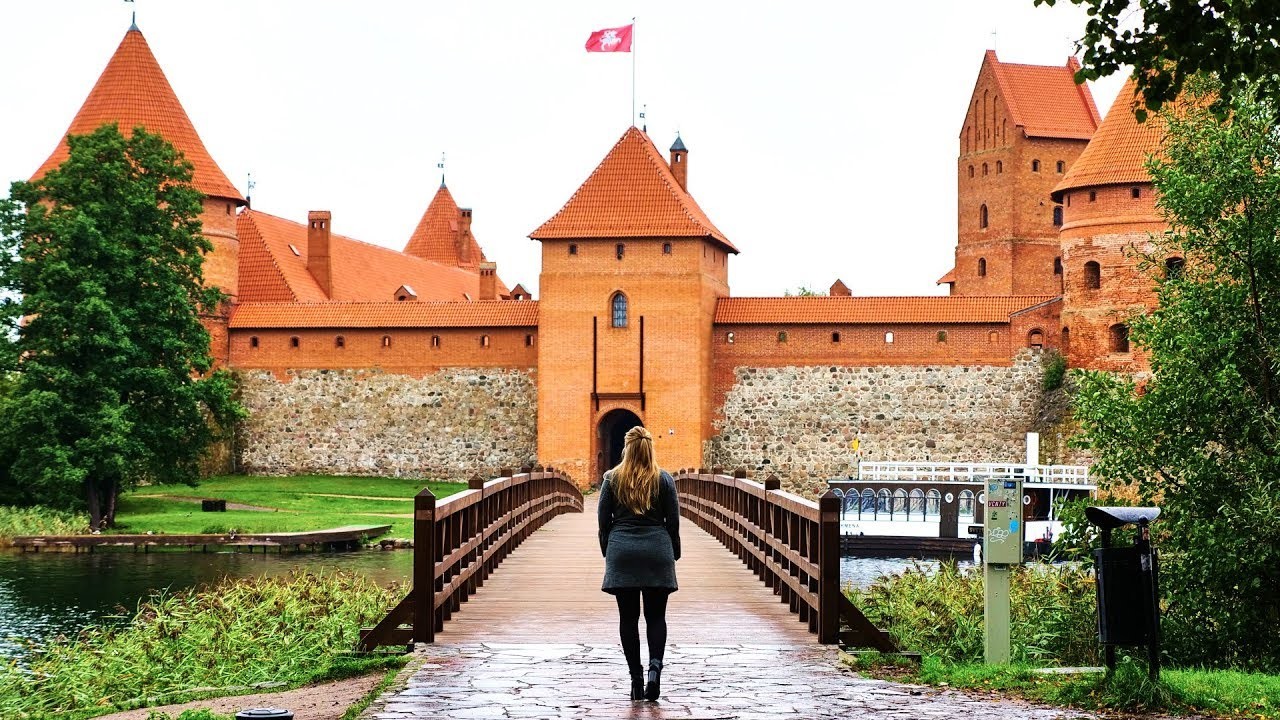 |
| Photo: WAY AWAY |
Trakai Island Castle on an island in Lake Galvė. The castle is sometimes referred to as 'Little Marienburg'. The construction of the stone castle was begun in the 14th century by Kęstutis, and around 1409 major works were completed by his son Vytautas the Great, who died in this castle in 1430. Trakai was one of the main centres of the Grand Duchy of Lithuania and the castle held great strategic importance.
Trakai Island Castle was built in several phases. During the first phase, in the second half of the 14th century, the castle was constructed on the largest of three lake islands by the order of Grand Duke Kęstutis. The construction of Trakai Island Castle was related to the expansion and strengthening of the Trakai Peninsula Castle. Kęstutis moved his main residence and his treasury to the Island Castle.
The castle suffered major devastation during an attack by the Teutonic Knights in 1377. After the assassination of Kęstutis, a power struggle between Jogaila and Vytautas the Great for the title of Grand Duke of Lithuania began. The castle was besieged by both sides. Soon after the reconciliation between Jogaila and Vytautas, the second phase of construction started and continued until 1409. This phase is regarded as the major development in the history of the castle. Apparently, during the truce with the Teutonic Order, the construction works were supervised by the Order's stonemason Radike, four years before the Battle of Grunwald.
During the second phase, two wings were added, and on the southern side a 6-storey donjon was built. The donjon had movable gates which separated the palace from the forecastle. The donjon was used for several functions; besides serving as another defensive structure, it had a chapel and living quarters. It was linked to the multi-storey Ducal Palace, which had an inner yard. The inner yard had wooden galleries, which ran around the inner wall; these galleries were used to access various support facilities without going inside the palace itself.
7. Hever Castle, England, UK
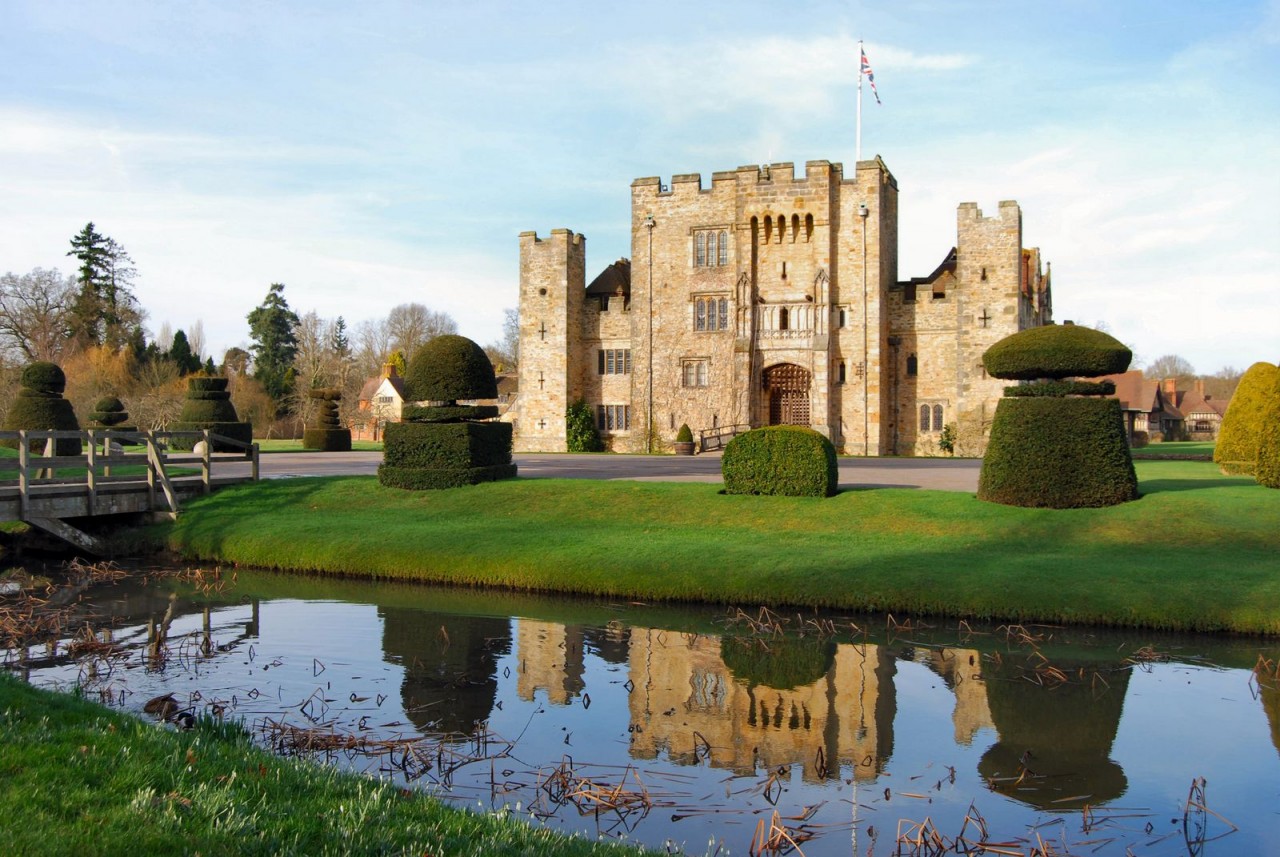 |
| Photo: Holiday and Travel Europe |
Hever Castle was begun in 1270 by William de Hever, though the gatehouse is all that remains of that early fortress. In 1462 the castle passed to the Bullen (Boleyn) family, and Geoffrey de Bullen added wings on each side of the existing gatehouse.
Several decades after the Boleyn family took over Hever, its most famous inhabitant, Anne Boleyn, was born. Anne would spend much of her childhood at Hever, and Henry VIII is known to have visited during his courtship. Anne's father, Thomas de Boleyn, expanded Hever still further, adding the Long Gallery, among other features.
After Anne's death the castle was given to Anne of Cleves, Henry's fourth wife, and in the centuries that followed it passed through the hands of several owners until in 1903 it was purchased by William Waldorf Astor.
Astor lavished his considerable fortune upon the estate, renovating the castle, building the "Tudor village", and creating the wonderful gardens. Hever is now in the hands of a private company.
The interior of Hever features some excellent Tudor furniture, portraits, and tapestries, as well as a costumed figure exhibit in the Long Gallery. There are exhibitions relating to Henry VIII and Anne, as well as a room devoted to a rather grisly display of medieval instruments of torture. Two illuminated Books of Hours inscribed by Anne Boleyn are proudly displayed.
8. Castello di Miramare, Italy
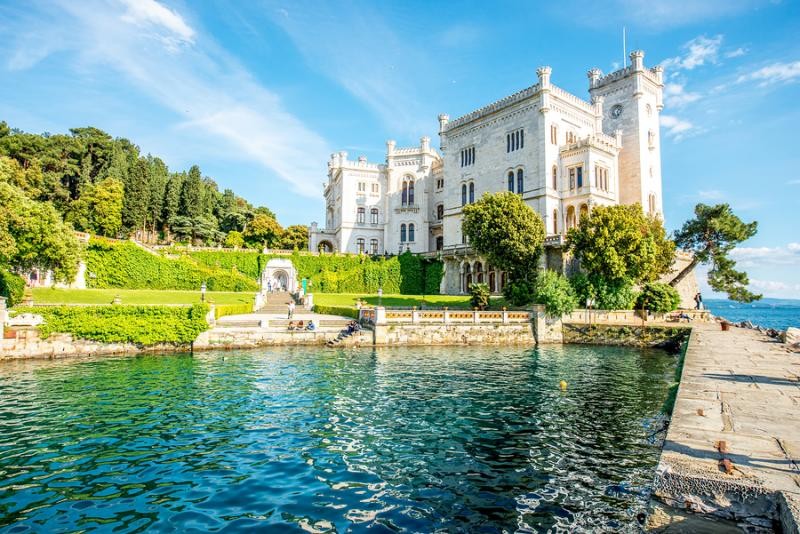 |
| Photo: Italy Magazine |
In a spectacular location on a rocky spur jutting out into the Gulf of Trieste, the Miramare Castle is no doubt one of Trieste’s major attractions.
It was built between 1856 and 1860 as the residence of archduke Ferdinand Maximilian Joseph Habsburg-Lorraine, a younger brother of the Austrian emperor Francis Joseph I, and his wife Charlotte of Belgium.
Strongly influenced by Romanticism in its style, it is not exactly a castle, but rather a good example of a princely residence of the 19th century with magnificent rooms, and a large Italian- and English-style garden, with rare plants, small lakes and sculptures.
According to legend, Ferdinand Maximilian picked the location after he was caught in a storm as he was sailing in the Gulf of Trieste and found shelter in the tiny harbor of Grignano, 6 km from Trieste. It is simply more likely that Maximilian, who had moved to Trieste, was fascinated by the natural beauty of the area and decided to build a house worthy of his rank there.
The architecture of the castle reflects the eclectic style of the era, with a mix of Gothic, medieval and Renaissance elements. Maximilian closely supervised its construction.
Miramare Castle has more than 20 rooms, among them the stunning ‘Maximilian’s Rooms’, which include the archduke’s bedroom designed and furnished like a ship’s cabin, and the ‘Throne Room’.
9. Frederiksborg Castle, Denmark
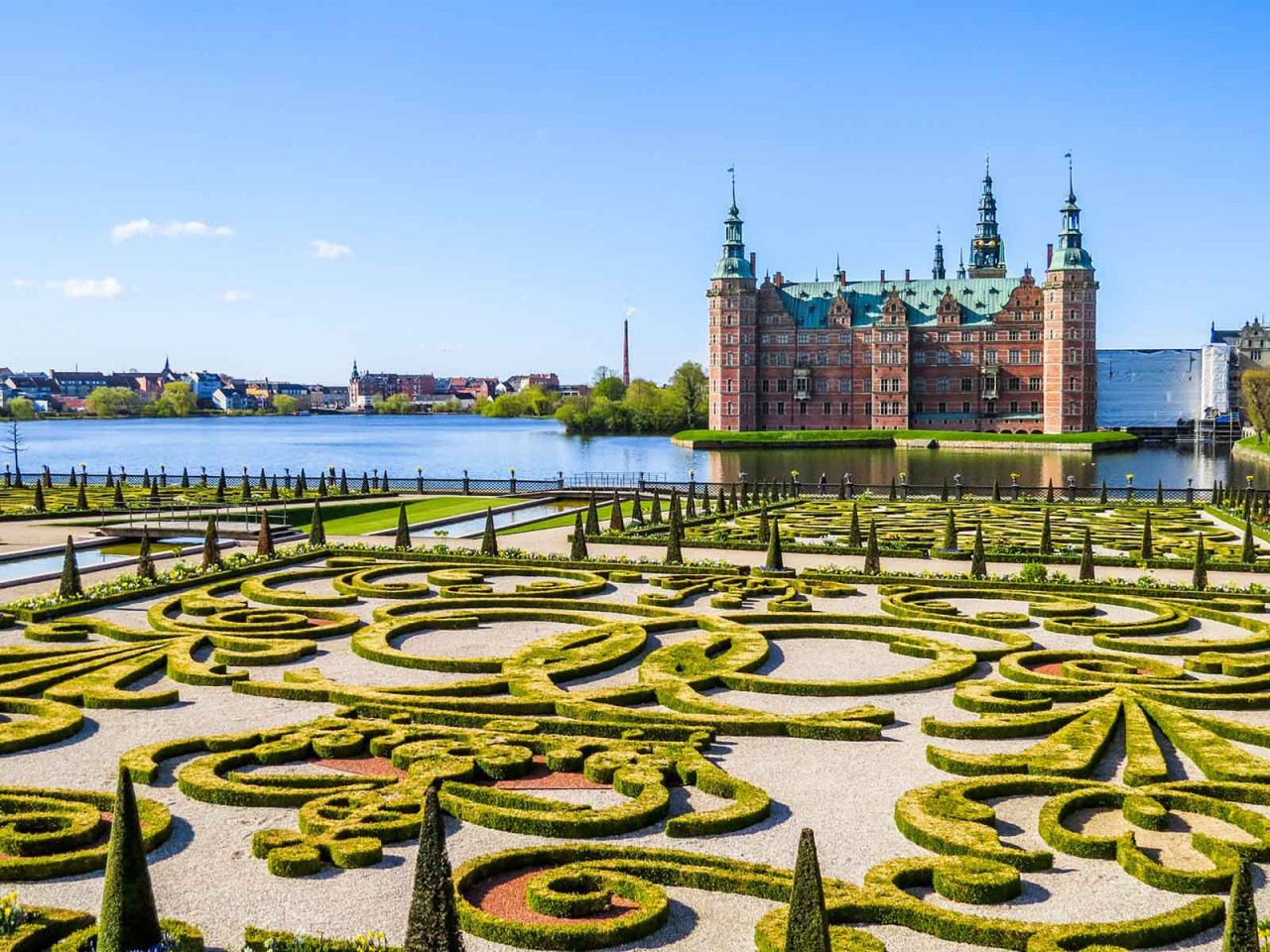 |
| Photo: Day Tours in Copenhagen with Hamlet Tours |
Frederiksborg Castle was built in the early decades of the 17th century by King Christian IV. It is the largest Renaissance castle in Scandinavia, and it incorporates the very best of Renaissance architecture and craftsmanship. Throughout the 17th century, Frederiksborg Castle was often used as a royal residence, for instance by Frederik VII in the 1850s.
Due to improper maintenance, a fire broke out in 1859, and the greater part of the interior of the castle was destroyed. The fire was a disaster. Fortunately, the castle was rebuilt by J. C. Jacobsen, the owner of the Carlsberg Breweries. The castle chapel survived the fire and today stands as in Christian IV’s time. To this day, Danish kings and queens are anointed in the chapel at Frederiksborg Castle.
The symmetrical castle garden was created by architect J. C. Krieger in 1725. It was designed to follow the main axis of the castle with a long perspective extending into the landscape. In baroque style, it was complete with festive cascades and parterre flower beds. During the following centuries, the garden was altered, but in 1996 it was restored to its original design. Noteworthy are the royal monograms executed in boxwood.
10. Château de Chenonceau, France
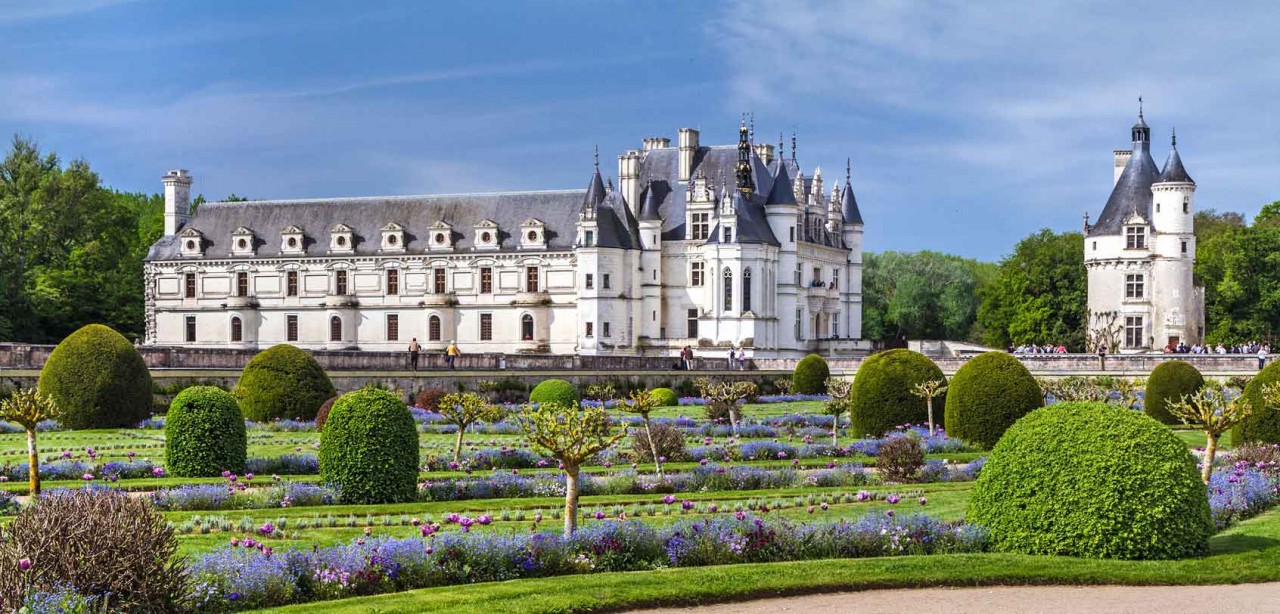 |
| Photo: Pinterest |
An architectural masterpiece, property of the Crown and then a royal residence, Château de Chenonceau is a truly exceptional site by its original design, but also its history: loved, managed and protected by women, including Diane of Poitiers and Catherine de Medicis, it is also known as the ‘Château des Dames’. The feminine touch is everywhere; it has protected the Château from the ravages of war and made it a peaceful place.
At the Château of Chenonceau, the flower arrangements in each of the sumptuously furnished rooms only add to the refinement. The Chambre des Cinq Reines, the Salon Louis XIV, the gallery on the River Cher, the astonishing kitchens built on the bridge piles, the Cabinet Vert of Catherine de Medicis... Step by step, Chenonceau takes you through history, its dreams and its secrets.
A focal point of civilisation and sharing, Château de Chenonceau has a collection of paintings by masters, a veritable pinacotheca worthy of the greatest museums... and a remarkable set of Flemish tapestries.
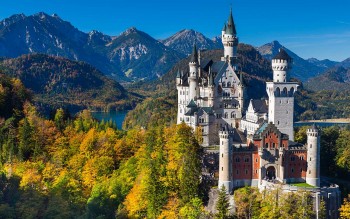 | Top 10 Most Beautiful Castles in Germany Europe is the land of palaces and castle, with outstanding, wonderful architectures. Take a look at these 10 most beautiful castles in Germany. |
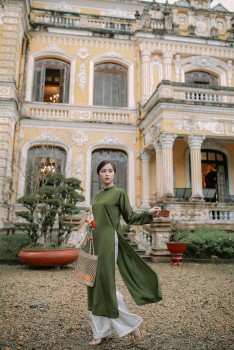 | For 104 Years, Hue's Anh Dinh Palace Continues to Impress Recognized by UNESCO as a World Cultural Heritage, An Dinh Palace was built as a real castle, with a different beauty compared to hundreds of ... |
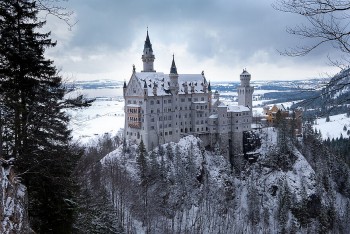 | The Most Beautiful Castles Around The World Through Dutch Photographer’s Lenses Vincent Croce, a Dutch photographer, has travelled around the world and Europe to capture the mesmerizing beauty of the ancient castles. |
Recommended
 World
World
US, China Conclude Trade Talks with Positive Outcome
 World
World
Nifty, Sensex jumped more than 2% in opening as India-Pakistan tensions ease
 World
World
Easing of US-China Tariffs: Markets React Positively, Experts Remain Cautious
 World
World
India strikes back at terrorists with Operation Sindoor
Popular article
 World
World
India sending Holy Relics of Lord Buddha to Vietnam a special gesture, has generated tremendous spiritual faith: Kiren Rijiju
 World
World
Why the India-US Sonobuoy Co-Production Agreement Matters
 World
World
Vietnam’s 50-year Reunification Celebration Garners Argentine Press’s Attention
 World
World








